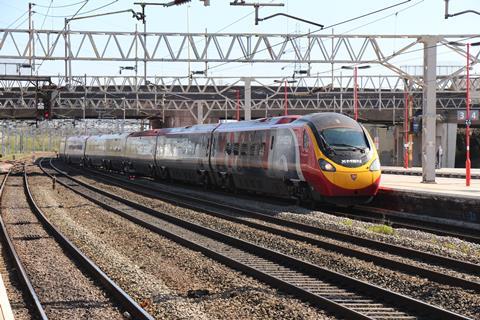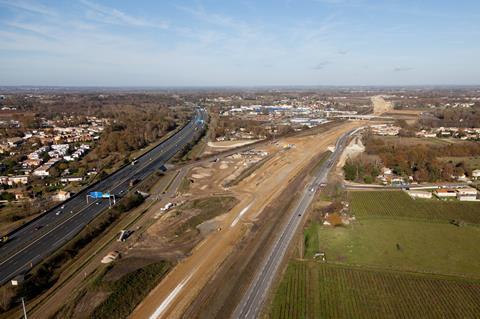
UK: Plans for a Midlands-North West Rail Link have been set out by the consortium appointed by the mayors of Greater Manchester and the West Midlands to develop fresh concepts in the wake of the cancellation of Phase 2b of High Speed 2.
The consortium, chaired by former HS2 Ltd Chairman Sir David Higgins and led by Arup alongside Addleshaw Goddard, Arcadis, Dragados, EY, Mace and Skanska, is proposing a lower-cost rail link connecting HS2 at Lichfield to High Legh.
The partners believe this would deliver 85% of the benefits of HS2 Phase 2b’s Western Leg at 60-75% of the cost.
Staged delivery
An incremental delivery approach would see MNWRL built in two main stages, starting with a Staffordshire Connector that would make use of existing land and parliamentary powers from the HS2 Phase 2A route to reduce costs and expedite delivery. This would cover the section between Fradley near Lichfield and Crewe.
North of Crewe, a Cheshire Connector would be built to take the line north to meet a potential future east-west Northern Powerhouse Rail corridor at High Legh, southwest of Manchester Airport.
Doing nothing not an option
Setting out its proposal on September 13, the consortium said it had assessed various options following the last government’s HS2 decision, acknowledging the severe capacity constraints facing operators on the West Coast Main Line between Birmingham and Manchester.
These options included doing nothing, ‘bare minimum upgrades’ and a new rail link.
The consortium envisages the new rail line would substantially reduce costs from the previous HS2 scheme by reducing the design speed to a provisional 300 km/h, using ballasted rather than slab track, UK rather than European standard cross-sections and simplified interfaces with the existing rail network. Journey times would be ‘only marginally slower’ than those set out in the HS2 plans; a London – Manchester journey would be 30 min faster than at present.
The team said a new line was the only suitable option for attracting private finance. The backers believe they could also save the taxpayer up to £2bn in costs related to the cancellation of HS2 Phase 2b through re-use of much of the land, powers, and design work that has already been secured through public investment.
Additionally, the creation of a new rail link between Birmingham and Manchester will move some passenger services to this new line, opening up more freight paths on the West Coast Main Line.
Attracting investors
Based on a review of international precedent and conversations with investors, the consortium suggests the scheme could be attractive to the private sector for a number of reasons.
These include:
- it is a greenfield, segregated line that minimises interfaces with existing rail infrastructure;
- it sits in a corridor that has demonstrated travel demand over a long-time period, and which is capable of supporting future economic and population growth; and
- it makes use of a de-risked engineering methodology.

Financing from the private sector would be maximised, with central and local governments partnering to fund the balance.
The revenue streams supporting the private investment could take the form of either availability/performance payments from government, or a track access charge model. The partners suggest that this is similar to the financing structures adopted for High Speed 1 and the LGV Sud Europe Atlantique high speed line between Tours and Bordeaux in France.
End uncertainty
‘The report is clear: if we fail to put in place a plan soon to fix rail capacity and connectivity between the north and the Midlands, the already-congested West Coast Main Line and M6 [motorway] will become major barriers to economic growth in the UK’, said Andy Burnham, Mayor of Greater Manchester: ‘But there is good news for the government. The report concludes that we do not have to revive HS2 to unlock those benefits. There is a viable option to build a new rail line between Lichfield and High Legh, connecting HS2 to Northern Powerhouse Rail, with almost all of the benefits of HS2 delivered quickly and crucially at a significantly lower cost.
‘Doing nothing is not an option as demand for rail services on the West Coast Main Line is set to exceed capacity within a decade. We are ready to work with government, colleagues in the West Midlands and the business community to build a railway fit for the 21st century. But we do need early decisions to end the uncertainty’, he insisted.
‘Our review sets out a plan to get connectivity between the Midlands and the northwest back on track’, added Higgins. ‘We don’t pretend that solving the rail challenges between these two places will be easy. We know it will be hard graft. What we need now is for the new government to work together with the business community and the Combined Authorities to take the practical steps to make a new rail link a reality.’



